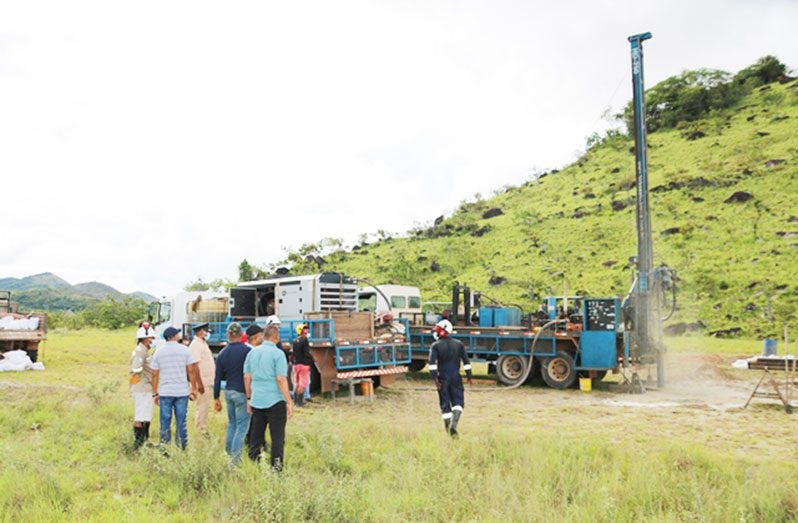-Some 300 residents to access potable water for the first time
A NEW water system will be installed in Itabac, Region Eight (Potaro-Siparuni), to provide the residents with adequate access to potable water. The project is estimated to cost over $30 million, with an estimated duration of four months.
The scope of the work includes the drilling of a potable water well, the supply and installation of a distribution network, the installation of a well pump and photovoltaic system, the establishment of service connections, the construction of a concrete base, as well as the installation of storage tanks and the setting up of interconnections to the distribution network at Itabac.
Close to 300 residents will benefit from first time access to water. Currently, the residents have no direct source of water and rely heavily on rainwater harvesting.
In November, when Minister of Housing and Water, Collin Croal spoke with the Department of Public Information (DPI), he said that although 98 per cent of the hinterland communities has the infrastructure in place to supply potable water, only 70 per cent of the population actually has access to potable water. This is due the layout of the communities which means that those with no direct access to potable water have to walk long distances to access water or practice rainwater harvesting.
The Hinterland Department of the Guyana Water Incorporated (GWI) has already determined the location where the well is to be drilled in the community. The project will be managed by the Director of Hinterland Services, Ramchand Jailall.
Because of the hardships faced by scores of Hinterland residents, the Housing and Water Ministry has embarked on an aggressive campaign to minimise the inequalities and bring relief to those affected.
The DPI had also reported that the GWI intends to spend some $120 million to develop water distribution systems and establish new wells across various Hinterland communities, including Yakarinta, Rupunau, Katoka and Apoteri.
Minister Croal had also announced in November that another $43 million would be directed towards completing new water systems in communities such as Para Bara, Wichibai, Curicock, Jawari and Nappi. These efforts would be executed via the respective Regional Democratic Councils (RDC)s.
Further, throughout the year 2021, in excess of $150 million was invested to upgrade existing and establish new water systems in Region Nine (Upper Takutu-Upper Essequibo) alone. Consequently, more than 500 residents of areas such as Shulinab, Shea, Annai, and Culvert City, Lethem were able to benefit from improved access to clean and safe water.
As reported by DPI, similar works were also done in the communities of Toka, Katoonarib and Potarinau which have wells that were commissioned with distribution systems, benefitting 1,320 residents.
Further, a Memorandum of Understanding (MoU) was signed by Guyana Water Incorporated (GWI) and the Ministry of Amerindian Affairs for community service officers throughout the Hinterland region to be trained in the monitoring and maintenance of the water systems.
Minister Croal said that two-day training programme has since commenced in Mabaruma, Region One and Lethem, Region Nine. Within the next month, training programs will take place in every other Hinterland community.
As part of the 2021 national budget, the People’s Progressive Party/Civic (PPP/C) government allocated $4 billion for the procurement of equipment needed to improve and expand the water supply network systems across the country. Another $275 million was allocated for the procurement and installation of 20,000 water meters for residential and business areas countrywide, while $200 million was plugged into the expansion of water treatment plants at Sophia, Eccles, Covent Garden, Grove, Friendship and Vergenoegen, to benefit over 50,000 residents.
Aside from extensive upgrades to the transmission mains between Church to Cummings Street and Cemetery Road to Mandela, Georgetown, benefitting over 35,000 residents, the government also invested $100 million to procure electromechanical equipment for the rehabilitation of water production facilities.
Increased investments are likely to come from allocations in the 2022 national budget, which is due to be presented next month.




.jpg)










